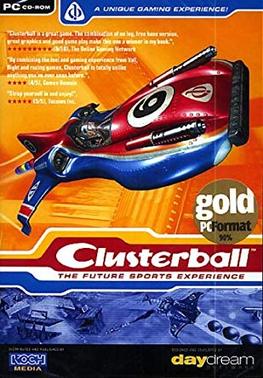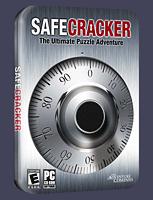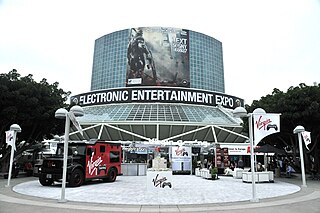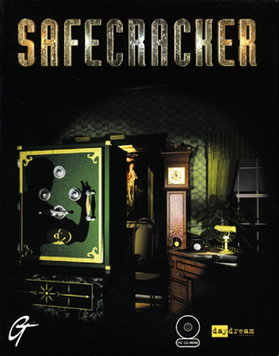
Atari is a brand name that has been owned by several entities since its inception in 1972. It is currently owned by French company Atari SA through a subsidiary named Atari Interactive. The original Atari, Inc., founded in Sunnyvale, California, USA in 1972 by Nolan Bushnell and Ted Dabney, was a pioneer in arcade games, home video game consoles, and home computers. The company's products, such as Pong and the Atari 2600, helped define the electronic entertainment industry from the 1970s to the mid-1980s.
Shovelware is a term for individual video games or software bundles known more for the quantity of what is included than for the quality or usefulness.

The Elder Scrolls IV: Oblivion is an open-world action role-playing video game developed by Bethesda Game Studios, and co-published by Bethesda Softworks and 2K. It is the fourth installment in The Elder Scrolls series, following 2002's The Elder Scrolls III: Morrowind, and was released for Microsoft Windows and Xbox 360 in 2006, followed by PlayStation 3 in 2007. Taking place within the fictional province of Cyrodiil, the game's main story focuses on the player character's efforts to thwart a fanatical cult known as the Mythic Dawn that plans to open portal gates to a demonic realm known as Oblivion.

DreamCatcher Interactive Inc. was a Canadian video game publisher founded in 1996 by Richard Wah Kan. It was best known for its adventure games. In 2006, the company became a subsidiary of JoWooD Entertainment. In 2011, the company went into administration along with its parent JoWooD and all assets were purchased by Nordic Games Holding. The DreamCatcher Interactive brand is currently being used as a publishing label for THQ Nordic.

Warner Bros. Games is an American video game publisher based in Burbank, California, and part of the Global Streaming and Interactive Entertainment unit of Warner Bros. Discovery (WBD). The publisher was founded as Warner Bros. Interactive Entertainment on January 14, 2004, under Warner Bros. Entertainment and transferred to its Home Entertainment division when that company was formed in October 2005. Warner Bros. Games manages the wholly owned game development studios TT Games, Rocksteady Studios, NetherRealm Studios, Monolith Productions, WB Games Boston, Avalanche Software, and WB Games Montréal, among others.

Clusterball is a 2000 video game featuring futuristic sport gameplay created by the Swedish Company Daydream Software and published by Strategy First, RealNetworks and Daydream Software itself.
Prince of Persia is a video game franchise created by Jordan Mechner. It is centered around a series of action-adventure games focused on various incarnations of the eponymous Prince, set in ancient and medieval Persia.

Safecracker: The Ultimate Puzzle Adventure is a 2006 puzzle adventure game developed by Kheops Studio and published by The Adventure Company. It is the spiritual successor to Daydream Software's 1997 title Safecracker.

Larian Studios is a Belgian video game developer and publisher founded in 1996 by Swen Vincke. It focuses on developing role-playing video games and has previously worked on educational games and a number of casino games. It is best known for developing the Divinity series and Baldur's Gate 3.
Engine Software is a Dutch video game developer, located in Doetinchem, Netherlands, which specialized in handheld video games and digital platforms until 2011. In the period after (2011-present) they have become more active and known for high-end ports and adaptations of games to modern consoles, mobile, PC and streaming services like Stadia and Luna. Some of the best known games they have worked on include Puzzle Quest for the Nintendo DS, Terraria for PlayStation 3, PlayStation 4, PlayStation Vita, Xbox 360, Xbox One and Wii U, Killer7 Remastered for PC, Ni No Kuni: Wrath of the White Witch for Nintendo Switch and No More Heroes / No More Heroes 2 for Nintendo Switch.

The Xbox is a home video game console manufactured by Microsoft that is the first installment in the Xbox series of video game consoles. It was released as Microsoft's first foray into the gaming console market on November 15, 2001, in North America, followed by Australia, Europe and Japan in 2002. It is classified as a sixth-generation console, competing with Sony's PlayStation 2 and Nintendo's GameCube. It was also the first major console produced by an American company since the release of the Atari Jaguar in 1993.

Swedair AB was a Swedish regional airline that existed from 1935 to 1994. It was founded as Svensk Flygtjänst AB by Tor Eliasson, who was CEO until his death in 1971. The companies last manageing director was Lars svanstrom

Video gaming in the United States is one of the fastest-growing entertainment industries in the country. The American video game industry is the largest video game industry in the world. According to a 2020 study released by the Entertainment Software Association, the yearly economic output of the American video game industry in 2019 was $90.3 billion, supporting over 429,000 American jobs. With an average yearly salary of about $121,000, the latter figure includes over 143,000 individuals who are directly employed by the video game business. Additionally, activities connected to the video game business generate $12.6 billion in federal, state, and local taxes each year. World Economic Forum estimates that by 2025 the American gaming industry will reach $42.3 billion while worldwide gaming industry will possibly reach US$270 billion. The United States is one of the nations with the largest influence in the video game industry, with video games representing a significant part of its economy.
Danger Close Games was an American video game developer based in Los Angeles. The company was founded in March 1995 as joint venture between DreamWorks SKG and Microsoft under the name DreamWorks Interactive, with studios in Redmond, Washington, and Los Angeles.

Safecracker is a 1997 puzzle adventure game developed by Daydream Software and published by GT Interactive. It casts the player as a security professional, whose goal is to infiltrate the mansion headquarters of a safe manufacturer and break into 35 of its unusual models. Each safe is guarded by a different type of puzzle, including sliding tiles, anagram codes and translations from braille. The player's progression is nonlinear: the mansion can be explored, and its safes unlocked, in multiple orders. However, the game must be completed within a 12-hour time limit.
The Xbox system software is the operating system developed exclusively for Microsoft's Xbox home video game consoles. Across the four generations of Xbox consoles, the software has been based on a version of Microsoft Windows and incorporating DirectX features optimized for the home consoles. The user interface, the Xbox Dashboard, provides access to games, media players, and applications, and integrates with the Xbox network for online functionality.

Traitors Gate is a 1999 graphic adventure game developed by Daydream Software. Set in a reproduction of the Tower of London, it follows the story of Raven, an American special agent trying to steal and replace the Crown Jewels of England to safeguard them from a rogue operative. The player assumes the role of Raven and solves puzzles within the Tower while evading the guards. Progression through the game is nonlinear and under a time limit: the player may solve certain challenges in multiple ways, but must win before 12 hours elapse.

Traitors Gate 2: Cypher is a 2003 graphic adventure game developed by Swedish studios 258 Productions AB and Data Ductus AB and published by The Adventure Company. It is the sequel to Daydream Software's game Traitors Gate.
Embracer Group AB is a Swedish video game and media holding company based in Karlstad. As of September 2023, Embracer Group has twelve operative groups as its direct subsidiaries: Amplifier Game Invest, Asmodee, CDE Entertainment, Coffee Stain Holding, Dark Horse Media, DECA Games, Easybrain, Embracer Freemode including its subdivision Middle-earth Enterprises, Gearbox Entertainment, Plaion, Saber Interactive, and THQ Nordic. Each group has its own operations, subsidiaries and development studios.














